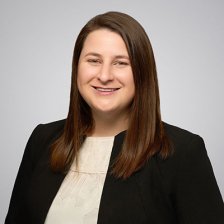Conversations about philanthropy typically focus on financial assets. However, social impact requires multiple types of resources, which are often referred to as the five Ts: treasure, time, talent, ties, and testimony. As federal funding rollbacks and executive actions are negatively impacting nonprofits and causing a heightened state of uncertainty across the sector, many families are increasing their grantmaking budgets. And yet, their gifts cannot adequately fill funding gaps, and funders are recognizing the need to lean on other resources to complement their grantmaking and support the nonprofits that are driving positive change. One such way is to use their voice and influence (testimony) to inspire other funders to give more and to do so in trust-based ways. A funder’s testimony can be powerful: A funder can advocate for issues in ways that may be too risky for nonprofits. Transparency can build trust and create accountability. And, a funder’s testimony can demonstrate what’s possible, spurring innovation and shifts in practices.
Signaling Solidarity
This spring, funders were invited to sign onto several commitments to address the new challenges and threats to the field with one voice. Among these invitations, NCFP partnered with the Trust-Based Philanthropy Project and Grantmakers for Effective Organizations to share a call to action for funders to embrace, which asks funders to move in solidarity with nonprofits, mobilize money in a trust-based way, and nurture possibility and innovation. Such statements are a way to demonstrate collective solidarity and create accountability for funders to follow through on an agreed-upon set of actions or values. However, they are only as powerful as the actions that they induce. We have been heartened by the many funders who signed the statement and, importantly, that many are taking action to complement their testimony.
For the Chicago-based Charles W. & Patricia S. Bidwill Foundation, publicly signing the trust-based philanthropy commitment was an easy decision. The foundation has a new interest in elevating its public presence—insofar as it is of service to its grantee partners—and recently launched a new website. Thus, the public nature of the commitment was a reason for the foundation to sign. “The pledge is a way for us to solidify our commitment to the many trust-based practices we already employ, and it gives us a framework and an opportunity to grow and be better partners,” says Advisor Janice Lombardo. “There are some elements of the commitment that we might never do, but we now have a guide for discussions of how to keep improving our work in service of our grantees.”
Godley Family Foundation Director Kathleen Carney-Godley said the funding callbacks and executive orders felt like an “asteroid hit.” Signing the commitment “was both a concrete and symbolic measure that felt like we were doing something,” she says. The Rhode Island-based foundation also realized that—due to its relatively small size—it was less vulnerable to federal scrutiny than other large funders. “As a small organization, how could I have more concern for the foundation than for the charitable organizations we support?” asks Carney-Godley. Executive Director Ashley Barrett adds, “to sign the commitment is really signing on to best practices in our field. This is supporting effective philanthropy and saying, ‘Here’s what we’re striving for.’”
Both foundations have embraced many trust-based philanthropy principles, including offering support beyond the check, increasing their grantmaking, and deepening their relationships with their community partners.
Sharing Specifics
For those of you who have increased your grantmaking or shifted your practices, inspiring others to do the same can be a powerful way to amplify your impact. Sharing specifics about how you are supporting their grantees requires that you come to consensus about what you can commit to, clarifies your path forward, and holds you accountable to those actions.
The McKnight Foundation quietly increased its grantmaking in 2023, but it wasn’t until April of 2025 that President Tonya Allen spoke up about the increase. Allen was clear about the foundation’s goal of using its voice to influence others: “By sharing how McKnight has increased our giving and highlighting the many ways a foundation can support the people it serves, we have an opportunity to inspire others to act as well.”
In March, the Weissberg Foundation announced its plans to release “surge funding” to more than 80 grantees for emergent needs. The additional $10 million more than doubled the foundation’s expected annual giving. Executive Director Ricshawn Adkins Roane named the ways the foundation is supporting its grantees, including accelerated disbursements with no application required, and issued a call to philanthropy, “we implore other funders to join us in centering the individuals, organizers, communities, and organizations who are bearing the brunt of the risk.”
The Stupski Foundation, which is spending down in 2029, recently announced its plans to increase its giving this year from its projected $34 million to $57 million. The foundation named that it was inspired by other funders who are moving more resources and calls on others to do the same.
The Marguerite Casey Foundation announced a $130 million investment, dipping into its endowment to increase grantmaking by five times. President and CEO Carmen Rojas uses her LinkedIn platform to urge other funders to make similar investments. For example, in a recent post she said, “To all foundations still weighing the risks: The greater risk is inaction. To every funder considering stepping up: We’re here to share what we’ve learned.”
Meeting the Moment
“My experience in this field is that people are relentlessly positive and want to make a difference. They’re also used to facing significant headwinds. We will need to continue to innovate, but let’s go forward together and build back stronger,“ says Barrett. Joining the chorus of funder voices is a vital way to do just that.
